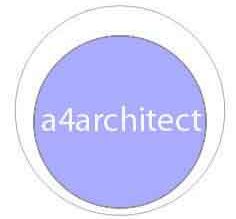By: Sam Bullman
We mean the shipping container here, not beer kit container. The 20 feet shipping container, 20’x8’x8.5′ in size, can accommodate a mobile dwelling unit, with beds and furniture that fold into the wall, for example. Shipping containers come mostly in the standard sizes of 20 feet, 40 feet and 45 feet high-cube (the last with a height of 9.5′). If desired, containers can be customized in various ways, by constructing containers of a different dimension, or converting them into, say, houses.
Containerization
Containerization facilitates inter-modal freight transport, i.e., container ships, railroad cars, and trucks can all accommodate standard sized containers. There are also standard containers for use in aircraft. So you can transport a container from the interiors by truck or railroad to a sea or air port, and send them to a distant location where the transport process is reversed, say, from ship to truck. Specialized container handling equipment can easily transfer the containers from the one mode to another.
Streamlining of freight transport operations lowers costs, and leads to lower freight charges and increased trade. It was in the 20th century that standardization of container sizes and container-handling equipment gained momentum and appeared as an important innovation in logistics. Initially standardized with 8’x8′ cross-sections and multiples of 10′ lengths, containers became increasingly popular starting 1950s.
Purpose-built container ships and railcars gave momentum to container-based freight operations. The containers were transported unopened from origin to destination, being transferred from one kind of transport vehicle to another as needed. Containers could thus travel across sea, land and air with practically no disruption.
The cargo could be tightly packed into the containers with minimum wastage of space. This was in contrast to the significant storage space wastage (not to mention time wastage) that would be involved if the cargo as such were moved individually to, and stored in, the cargo holds of standard ships.
Standardization of containers involved not only their dimensions, but also corner fittings, reinforcements and identification markings. Standard pallets that fit neatly into the containers were used to pack merchandise. Container capacity is expressed in TEUs or twenty-foot equivalent units. These standards have now been accepted worldwide.
Containers used for air transport have a different set of dimensional standards that are much smaller in length, width and height.
Containers come in many types. There are ‘dry van’ containers for boxes, bales, pallets, drums, etc, ‘reefer’ containers that are temperature controlled from -25 degrees to +25 degrees centigrade, bulk containers for bulk materials and heavy machinery, tank containers for liquids, and other kinds of specials including those with rolling floors for difficult-to-handle cargo.
Container Related Issues
Containers enhance security as the contents are not visible and the doors are sealed in a manner to detect any tampering. Cargo did not “fall off” the trucks as was common in earlier days. On the other hand, the fact that containers are not typically opened meant that they could be used to transport contraband.
The increased efficiency of container based cargo handling typically leads to job losses, and moving work to inland from waterfronts.
Where two-way cargo movement is not balanced, empty containers can accumulate at certain places and transporting the bulky empty containers is often not cost effective. To handle this issue, containers are often converted to other uses.
About the Author
Sam Bullman writes about Container please visit www.bullmans.co.uk for more details.
(ArticlesBase SC #362203)
Article Source: http://www.articlesbase.com/ – The Container Streamlines Freight Movement (and Can Become Offices, Shops and Houses)


Leave a Reply